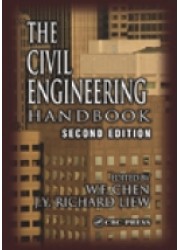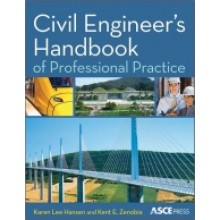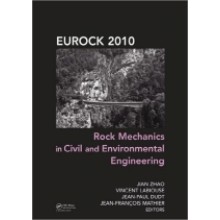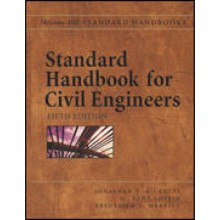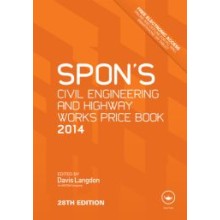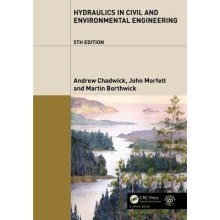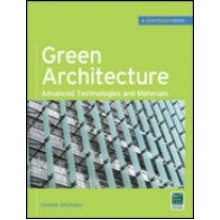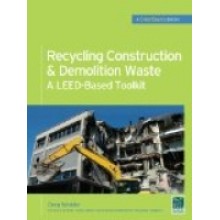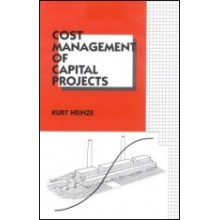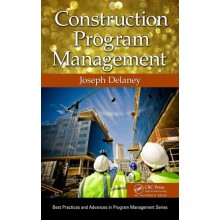The Civil Engineering Handbook, 2nd Edition
ISBN: 9780849309588
Author: J.Y. Richard Liew, W.F. Chen
Dispatch Time: 2 - 3 Days
Quantity:
-
Add to Compare
The Civil Engineering Handbook, Second Edition is more comprehensive than ever. You'll find new, updated, and expanded coverage in every section. In fact, more than 1/3 of the handbook is new or substantially revised. In particular you'll find increased focus on computing reflecting the rapid advances in computer technology that has revolutionized many aspects of civil engineering.You'll use it as a survey of the field, you'll use it to explore a particular subject, but most of all you'll use The Civil Engineering Handbook to answer the problems, questions, and conundrums you encounter in practice.
Preface
Chapter 1 : Construction Estimating
Chapter 2 : Construction Planning and Scheduling
Chapter 3 : Equipment Productivity
Chapter 4 : Design and Construction of Concrete Formwork
Chapter 5 : Contracts and Claims
Chapter 6 : Construction Automation
Chapter 7 : Value Improvement Methods
Chapter 8 : Water and Wastewater Planning
Chapter 9 : Physical Water and Wastewater Treatment Processes
Chapter 10 : Chemical Water and Wastewater Treatment Processes
Chapter 11 : Biological Waste Water Treatment Processes
Chapter 12 : Air Pollution
Chapter 13 : Incinerators
Chapter 14 : Solid Waste
Chapter 15 : Soil Relationships and Classification
Chapter 16 : Accounting for Variability (Reliability)
Chapter 17 : Strength and Deformation
Chapter 18 : Groundwater and Seepage
Chapter 19 : Consolidation and Settlement Analysis
Chapter 20 : Stress Distribution
Chapter 21 : Stability of Slopes
Chapter 22 : Retaining Structures
Chapter 23 : Foundations
Chapter 24 : Geosynthetics
Chapter 25 : Geotechnical Earthquake Engineering
Chapter 26 : Geo-Environment
Chapter 27 : In Situ Subsurface Characterization
Chapter 28 : In Situ, Testing and Field Instrumentation
Chapter 29 : Fundamentals of Hydraulics
Chapter 30 : Open Channel Hydraulics
Chapter 31 : Surface Water Hydrology
Chapter 32 : Urban Drainage
Chapter 33 : Quality of Urban Runoff
Chapter 34 : Groundwater Engineering
Chapter 35 : Sediment Transport in Open Channels
Chapter 36 : Coastal Engineering
Chapter 37 : Hydraulic Structures
Chapter 38 : Simulation in Hydraulics and- Hydrology
Chapter 39 : Water Resources Planning and Management
Chapter 40 : Constituents and Properties of Concrete
Chapter 41 : Durability of Concrete
Chapter 42 : Special Concrete and Applications
Chapter 43 : Wood as a Construction Material
Chapter 44 : Structural Steel
Chapter 45 : Bituminous Materials and Mixtures
Chapter 46 : Mechanics of Materials
Chapter 47 : Theory and Analysis of Structures
Chapter 48 : Design of Steel Structures
Chapter 49 : Cold Formed Steel Structures
Chapter 50 : Design of Concrete Structures
Chapter 51 : Composite Steel-Concrete Structures
Chapter 52 : Structural Reliability
Chapter 53 : General Mathematical and Physical Concepts
Chapter 54 : Plane Surveying
Chapter 55 : Geodesy
Chapter 56 : Photogrammetry and Remote Sensing
Chapter 57 : Geographic Information Systems
Chapter 58 : Transportation Planning
Chapter 59 : The Air Transportation System
Chapter 60 : High-Speed Ground Transportation
Chapter 61 : Urban Transit
Chapter 62 : Highway and Airport Pavement Design
Chapter 63 : Geometric Design
Chapter 64 : Highway Traffic Operations
Chapter 65 : Intelligent Transportation Systems
Chapter 66 : Highway Asset Management
Chapter 67 : Environmental Considerations During Transportation Planning
Appendix
Index
Write a review
Your Name:Your Review: Note: HTML is not translated!
Rating: Bad Good
Enter the code in the box below:
Copyright © 2014 Engineering Standards Bureau. All Rights Reserved.
Developed By Zoom Into Web


